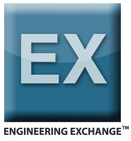By Jack Thornton, Principal, MINDFEED Marcomm, Santa Fe, N.M.
Lockheed Martin’s many programs include the U.S. Air Force’s next-generation Global Positioning System (GPS III), the Orion Crew Exploration Vehicle of the National Aeronautics and Space Administration (NASA), the Terminal High Altitude Area Defense (THAAD, a key element of the Ballistic Missile Defense System), and the Fleet Ballistic Missile (FBM, the submarine-launched Trident II).

The Collaborative Immersion Lab (CHIL) uses advanced technologies and simulation software to virtually design and test products before prototypes are built.
Because of the number of projects and their complexity, Lockheed Martin needed a place to simulate hardware designs and manufacturing processes in the virtual world before production or development begins. The company has this capability at its Collaborative Human Immersive Lab (CHIL). It is an advanced technology virtual reality and simulation laboratory that offers a smarter, cheaper, and lower risk opportunity to build space systems, including satellites, exploration spacecraft, launch vehicles, and missile defense systems. The facility creates virtual models before making physical models. It uses motion tracking systems, CAD and simulation software, and virtual reality technology to create a collaborative environment for exploring and solving problems quickly. Using CHIL simulation capabilities, hardware designs and manufacturing processes can be fine-tuned in the virtual world before production or development begins.
To help out at CHIL and sister operation Human Immersion Lab (HIL) at Lockheed Martin Aeronautics, fundamental Virtual Reality (VR) capability includes 24 motion-tracking digital cameras and Cortex image-analysis software from Motion Analysis Corporation. Cortex can scale objects to multiple, independent, concurrent, live, full-body kinematic simulations.

Software simulates human interaction in CHIL.
An example of their work is embodied in Lockheed Martin’s Ship/Air Integration Lab (SAIL), which along with HIL, were part of developing the F-35 Lighting II, the world’s first multi-role Mach+ fighter stealth aircraft. The immersive engineering systems were crucial in making early F-35 design changes. Those changes avoided $100 million in design modifications. Internally SAIL generated a 15-fold return on the company’s total investment by applying immersive engineering to detailed aircraft design before production began. After the F-35’s design was complete, SAIL’s mission included safety analyses and facility reviews.
CHIL makes Space Systems Company the third Lockheed Martin business to adopt the VR and motion tracking approach to immersive engineering. It also represents a branching out of immersive engineering technology to final assembly. While SAIL/HIL focus on holding down life-cycle costs of aircraft, CHIL capabilities span the entire life-cycle from concept phase to operations and sustainment while mistake-proofing the production phase.
“CHIL is about the virtual creation of our products and associated processes in digital form before we build the physical products,” said Jeff D. Smith, director of special projects at Lockheed Martin Space Systems Company. “Opportunities exist in both government and commercial applications.
Mark D. Stewart, Lockheed Martin Space Systems Company’s vice president for assembly, test, and launch operation, noted, “CHIL’s purpose is to ensure flawless execution — getting spacecraft assembly done right the first time.”
The size and complexity of spacecraft can be daunting and they can weigh thousands of pounds and have tens of thousands of electronic and electro-mechanical components. Each spacecraft is one-of-a-kind and is assembled by hand. Every connection must withstand the shock and vibration of riding a rocket into space so every assembly step is verified and documented.
Once launched, spacecraft traverse millions of miles of space and arrive unaffected by the deep cold and low-level radiation of space travel. They must perform for years in places such as the surface of Mars where maintenance and repairs are impossible. For every spacecraft builder, this means assembly areas must be completely free of dust and grounded to prevent build-up of static electricity. Under these exacting conditions, even highly skilled teams need weeks or months to build and test a spacecraft. All this is costly.

Cortex image-analysis software can scale objects to multiple, independent, concurrent, live, full-body kinematic simulations.
Lockheed Martin summarized CHIL’s anticipated benefits as “a rich virtual environment” that lets engineers:
• Establish, optimize and validate processes before release to manufacturing,
• Identify bottlenecks, collisions and worker issues before they happen,
• Improve resource utilization and material flow,
• Improve producibility,
• Reduce rework and scrap, and
• Mitigate program risk.
Discuss this on The Engineering Exchange:

Lockheed Martin Space Systems
www.lockheedmartin.com
Motion Analysis Corp.
www.motionanalysis.com
Filed Under: Aerospace + defense, Software • 3D CAD, Software • FEA, Software • simulation, Virtual reality, ENGINEERING SOFTWARE





Tell Us What You Think!